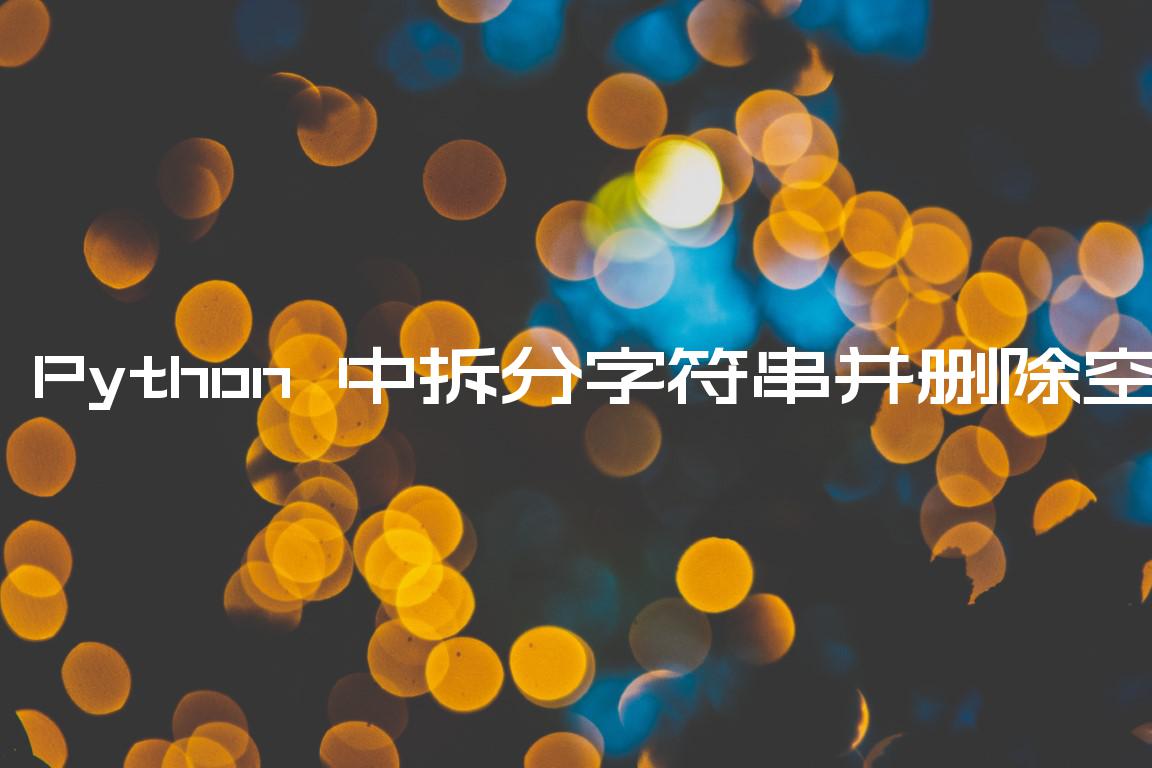在 Python 中拆分字符串并删除空格
Split string and remove whitespace in Python
要拆分字符串并删除空格:
- 使用
str.split()方法将字符串拆分为列表。 - 使用列表理解来遍历列表。
- 在每次迭代中,使用该
str.strip()方法删除前导和尾随空格。
主程序
my_str = 'one, two, three, four' my_list = [word.strip() for word in my_str.split(',')] print(my_list) # 👉️ ['one', 'two', 'three', 'four']
我们使用该str.split()方法在每次出现逗号时拆分字符串。
str.split ()
方法使用定界符将字符串拆分为子字符串列表。
该方法采用以下 2 个参数:
| 姓名 | 描述 |
|---|---|
| 分隔器 | 在每次出现分隔符时将字符串拆分为子字符串 |
| 最大分裂 | 最多maxsplit完成拆分(可选) |
如果在字符串中找不到分隔符,则返回仅包含 1 个元素的列表。
主程序
my_str = 'one, two, three, four' l = my_str.split(', ') print(l) # 👉️ ['one', ' two', ' three', ' four']
下一步是使用列表理解来迭代字符串列表。
主程序
my_str = 'one, two, three, four' my_list = [word.strip() for word in my_str.split(',')] print(my_list) # 👉️ ['one', 'two', 'three', 'four']
列表推导用于对每个元素执行一些操作,或者选择满足条件的元素子集。
在每次迭代中,我们调用该str.strip()方法以从字符串中删除任何前导或尾随空格。
主程序
example = ' hello ' print(repr(example.strip())) # 👉️ 'hello'
str.strip方法返回删除
了前导和尾随空格的字符串副本。
另一种方法是使用map()函数。
要拆分字符串并删除空格:
- 调用字符串上的
str.split()方法以获取字符串列表。 - 将
str.strip方法和列表传递给map()函数。 - 该
map函数将对str.strip列表中的每个字符串调用该方法。
主程序
my_str = 'one, two, three, four' my_list = list(map(str.strip, my_str.split(','))) print(my_list) # 👉️ ['one', 'two', 'three', 'four']
map()函数将一个函数和一个可迭代对象作为参数,并使用可迭代对象的每个项目调用该函数。
我们将
str.strip方法用作函数,因此函数将对列表中的每个项目调用该方法。 mapstr.strip()该map函数返回一个地图对象(不是列表)。如果需要将值转换为列表,请将其传递给list()类。
您选择哪种方法是个人喜好的问题。我会选择列表理解,因为它更具可读性和明确性。
